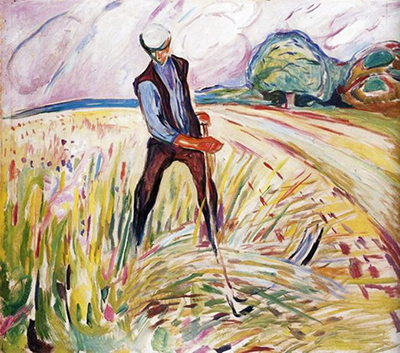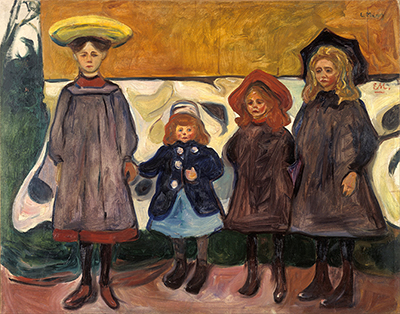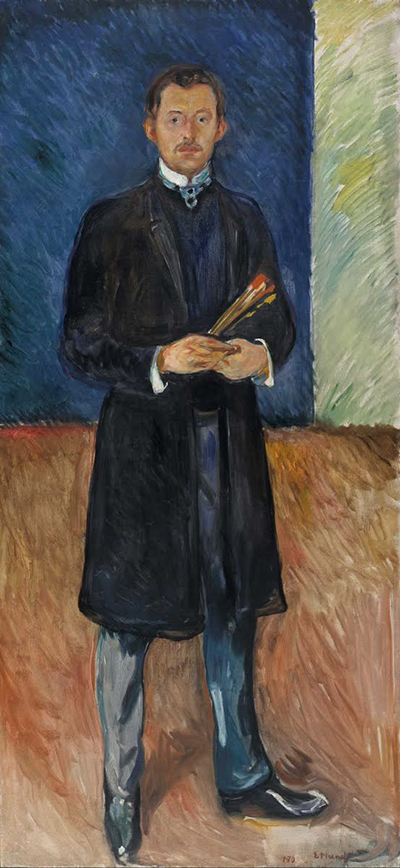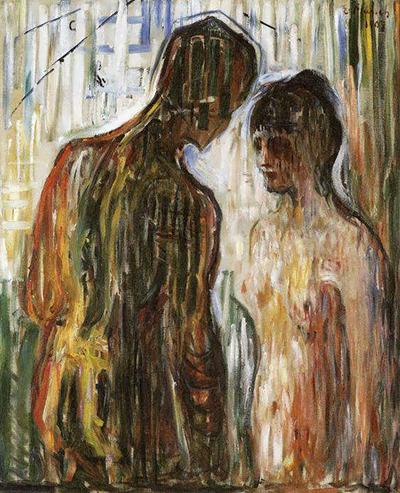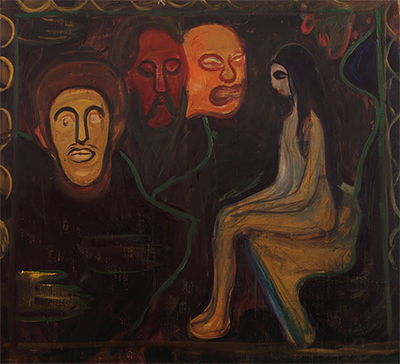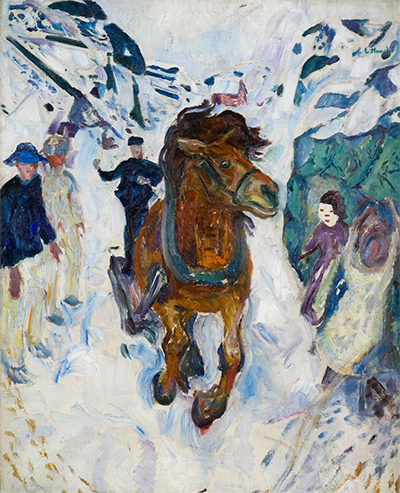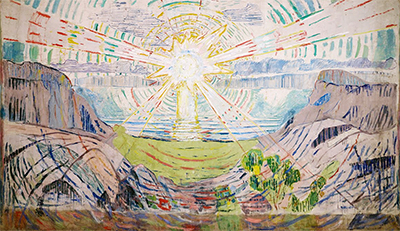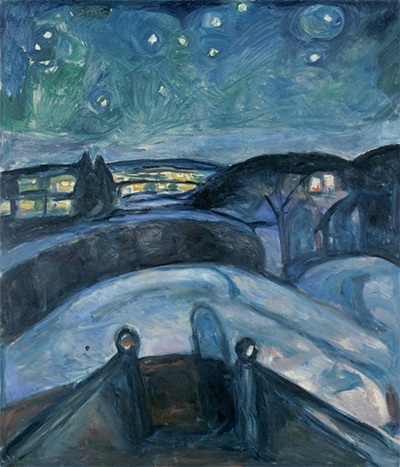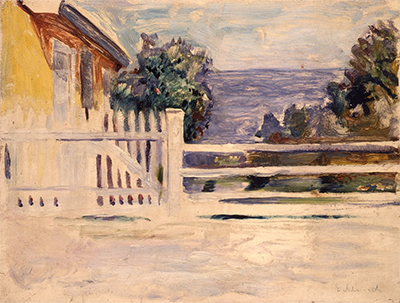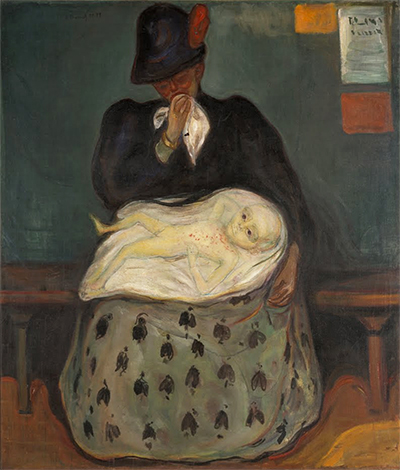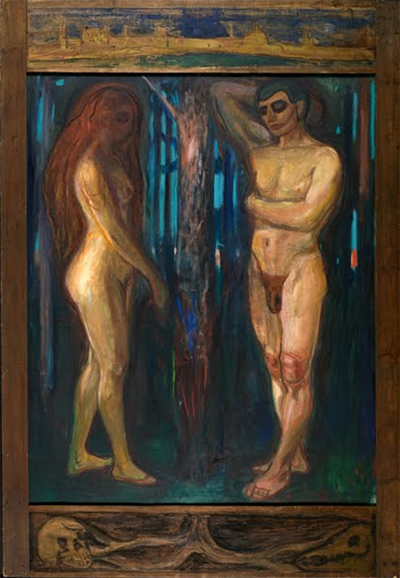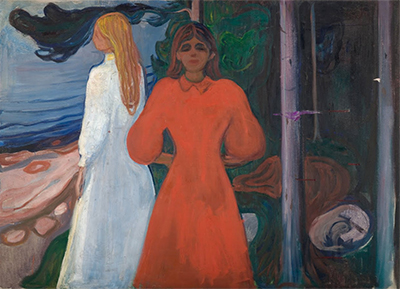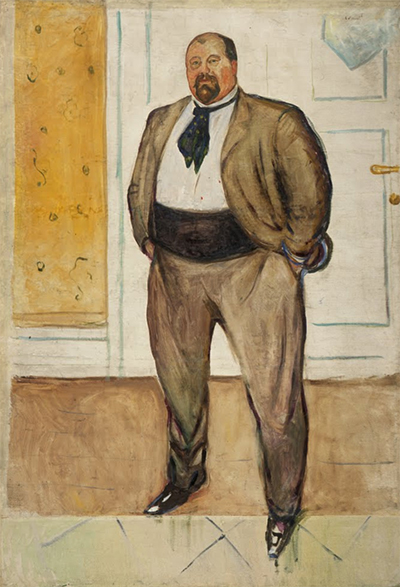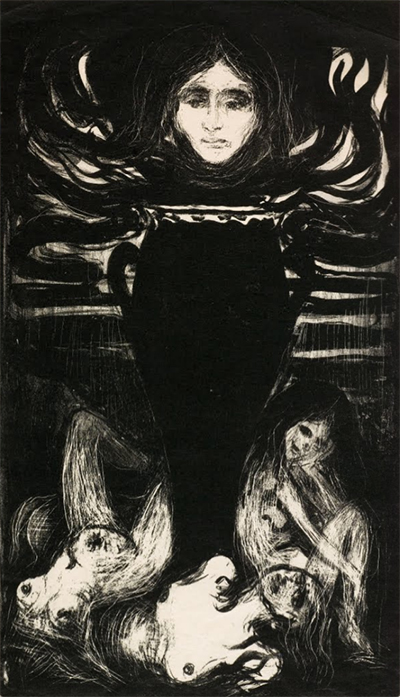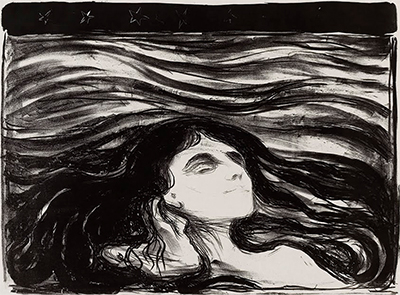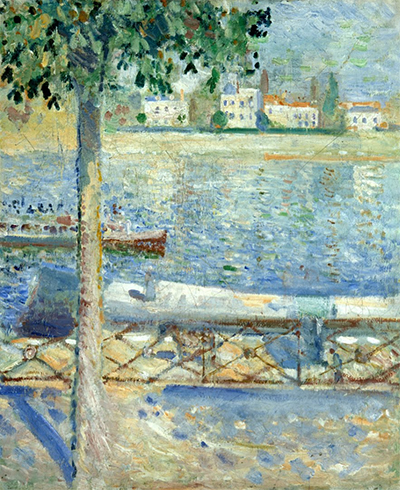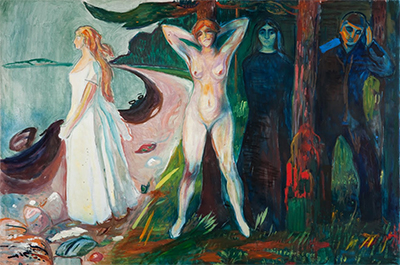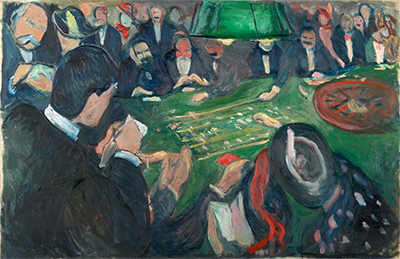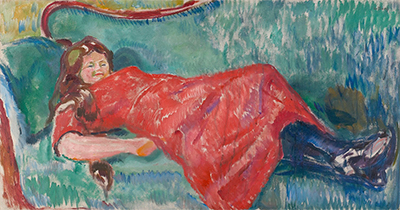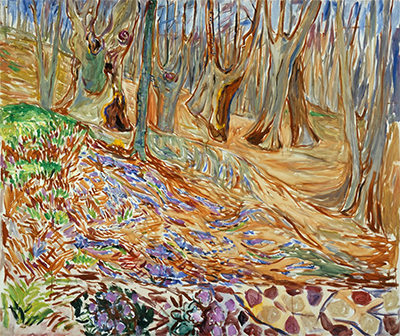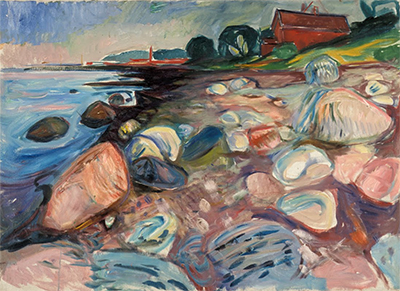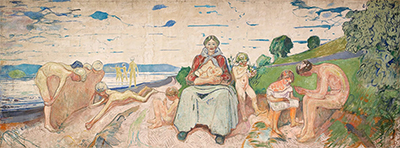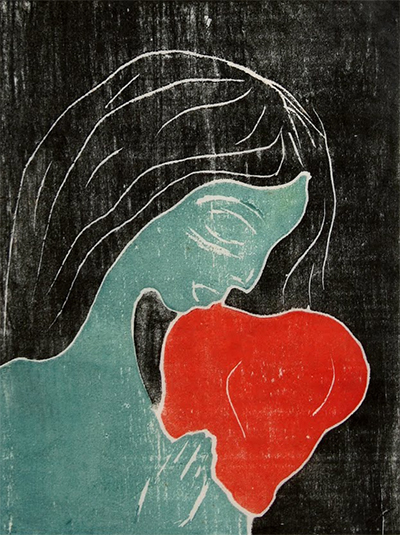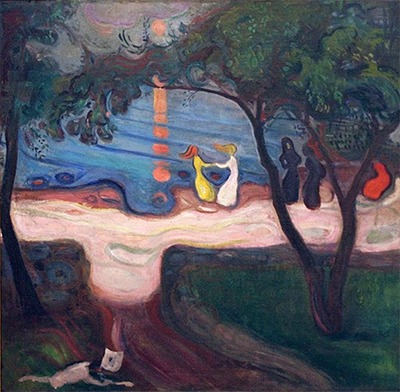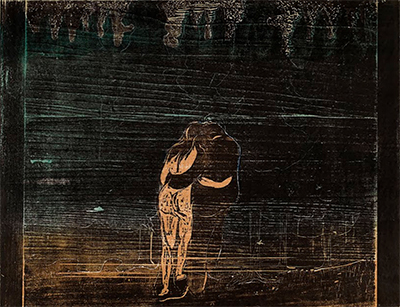Discover the expressive genius of Norwegian artist, Edvard Munch, in this extensive gallery that displays all of his most famous paintings from an extensive and highly influentual career.
Edvard Munch was an artist whose paintings combined Symbolism and Expressionism in a way never seen before. As a Norwegian artist he was always somewhat of an outsider, geographically separated from the major modern art movements popping up around Europe during this period. Munch's artistic life reigned from 1880 to 1943. By the time of his death, he had a total of 1006 paintings in his possession. In his will, he gifted all his work to The Municipality of Oslo. After his passing, his paintings were put on display in the Munch Museum, Oslo. The following are but a few of his masterpieces whilst his drawings are also of great artistic importance.
While Edvard Munch was studying Kristiania, he started an unconventional lifestyle under the influence of Hans Henrik Jæger, a nihilist who asked him to paint his psychological and emotional state (soul painting). This was the beginning of his distinctive style. Travelling brought Munch new outlets and new influences. In Paris, Munch learned much from Henri de Toulouse-Lautrec, Vincent van Gogh and Paul Gauguin, particularly their use of colour. While he was in Berlin, the painter met Swedish playwright Johan August Strindberg, whom Munch painted, as he was embarking on his major canon known as The Frieze of Life.
While in Paris, Munch executed The Sick Child, a group of 6 paintings and several etchings, drypoints and lithographs. They all depict a moment before Johanne Sophie, his older sister, died from tuberculosis at the age of 15. He completed The Sick Child between 1885 and 1926. The artist repeatedly returned to this traumatic event in his art, more than 6 completed oil paintings and numerous studies in different media, for more than four decades. In the paintings, his sister is seen on her deathbed with her aunt Karen. In the painted versions, Johanne is shown sitting in a chair, suffering from pain and supported by a large pillow. She's staring at an ominous curtain, which is a symbol of death. Throughout Munch's career, he often returned to and made a number of variants of his paintings. He created numerous versions of The Sick Child in various formats.
All of these paintings and most of the ancillary works by Munch are considered significant to his oeuvre. The pieces in this series are influenced by the laws of German Expressionism. Most of them are also heavily impressionistic in technique. All the painted versions are made from thick layers of impasto. They also show strong wide vertical brushstrokes, which add to their emotive power. Munch executed his most famous work The Scream while he was still in Kristiania. The painter was out walking when he heard the tremendous, infinite scream of nature. The painting is one of the world's most recognisable paintings. The agonised face has been widely identified with the anxiety of the modern man. It's painted with highly simplified forms and broad bands of bright colour, and it employs a high viewpoint.
Munch reduced the agonised figure in the painting to a garbed skull experiencing an unpleasant emotional crisis. With The Scream, the painter met his goal of soul painting. Between 893 and 1910, Munch executed two painted version of this painting, two pastels and several prints. Madonna is the title given to a number of versions of a composition executed between 1892 and 1895. The versions use oils on canvas and all of them show a bare-breasted female figure. The painting materials that Munch used in Madonna include vermilion, artificial ultramarine, charcoal black, yellow ochre, Prussian blue and chrome yellow. Munch executed Puberty in 1894–95. This painting depicts a young, beautiful naked girl who is sitting on the bed with her legs pressed together. One of her hands is lying between her knees and the other one is resting on her right thigh.
The girl is staring straight ahead with her wide-open eyes. Her long hair is lying down over her shoulders and her mouth is closed. The light is entering from the left; behind the young girl, there is an ominous shadow. The motif is often considered as a symbol of fear and anxiety: The awakening of a young girl's sexuality and changes she experiences psychologically and physically on the path towards being an adult. Puberty was influenced by the work of Félicien Victor Joseph Rops, specifically the etching Don Juan's Greatest Love. Munch's paintings were personalised. The painter's "private" symbolism was more personal when compared to other Symbolist painters. He was highly influential as the German Expressionists followed his philosophy.
The Scream (1893) – Also known as The Cry. The sky is painted from swirls made from strokes of bright colours. There is an individual in the foreground who is grabbing his/her face tightly and is seemingly screaming. It is hard to tell why exactly the person is screaming or what Edvard is trying to communicate. The person is standing on a dock alone, and in the far background, there are two vague figures which look like people.
The Kiss (1897) – It generally portrays a couple, a man and a woman, engaging in an intimate kiss. What makes it unique is the way he merged their faces into one face. Perhaps it symbolizes the way the two were bonded in unity. They are kissing passionately, his arms around her and vice versa. The only other thing in the scene is a half covered mirror.
Despair (1892) – Edvard uses the same setting as The Scream. Only that in this particular painting, the individual is sulking. The mood is sombre, could he be regretting something he did? Is he disappointed? Or maybe it's all of those combined scenarios. The sky in this painting is grey, provoking sad moods.
Anxiety (1894) – He used the same theme he used in The Scream and Despair. In this particular painting, there's a group of people on the so far famous bridge, all headed in the same direction. There is clear look of anxiety on their faces. It's like they're scared of what they're going to meet. The sky is now made from colourful waves. He has used both bright and dark colours to bring the sombre mood.
Dance of Life (1899-1900) – as the title suggests, the painting shows couples dancing. In the foreground, there are two sad ladies on either who are not paired up with anyone and are not dancing. The rest are happily dancing though. There's use of bright colours to suggest a light mood.
Madonna (1892-1895) – The painting is of a bare breasted lady who is definitely confident about her body. She has thrown her head back and has one hand behind her neck, the other is behind her lower back. This particular painting was stolen in 2004 from the Museum of Munch, but it was recovered two years later.
Vampire (1893) – It was initially known as "Love and Pain", at least that's what Edvard named it. It showed a man and a woman covered in embrace, the woman seated down and the man on her laps. Edvard described the scene simply as a woman kissing her lover's neck. But with time it picked up the name Vampire's embrace, as it seemed like a woman sucking blood out of the man's neck.
Melancholy (1894) – this has a beach setting. It shows a man seated at the seashore amongst some rocks at some time in the afternoon. The man seems to be thinking or contemplating about something that got him completely indulged. He looked distanct.
Death in the sickroom (1895) – the setting looks like a living room of some sort. There are different people in the room each mourning in his/her own way, none interacting with the other. There's a little girl seated on a chair in the background with her father standing above her while praying.
Starry night (1893) – The painting is of a beach setting at night. It is a calm night and the sky is clear, no clouds but there are a lot of stars hence the title of the painting.
Ashes (1894) – There's a gentleman in the foreground who's covering his face in shame and there's a lady in the background with her dress unbuttoned, showing us a sneak peak of her undergarment. She is standing with both her hands behind her neck. The scene is in a forest.
Fertility (1898) – this is a painting of a man and a pregnant woman in the garden under a tree. The man is seated on a rock with a walking stick next to him. The woman is standing opposite the man holding a basket of cherries.
Puberty (1894-1895) – this piece shows a young naked girl sitting on the edge of a bed. She is staring directly with her mouth clothes. Her thighs are pressed together, her right hand is tucked between her thighs and her left hand is on top of her right thigh. There's a clear dark shadow behind her which runs from the bed to the wall.
The Sick Child (1907) – this portrays an image of a young girl lying in her bed propped up by a pillow. A lady, most probably her mother, is seated beside her bed, her head facing down while she clasps the young girl's left hand. It is a touching photo. The girl seems to be strong and probably comforting her mother.
Evening on Karl Johan Street (1892) – the scene is set on a street, perhaps Karl Johan Street? There are buildings on either side of the road, and there's a huge crowd of ladies and gentlemen on the left pavement. There's one single silhouette in the middle of the road.



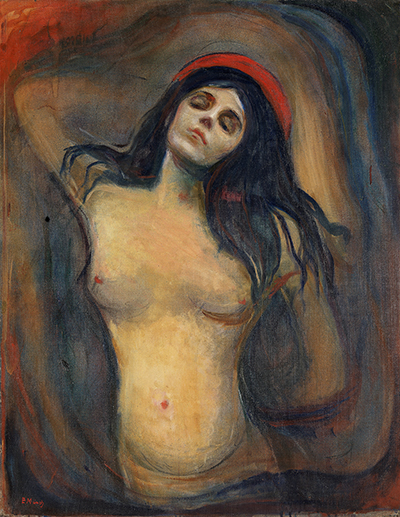
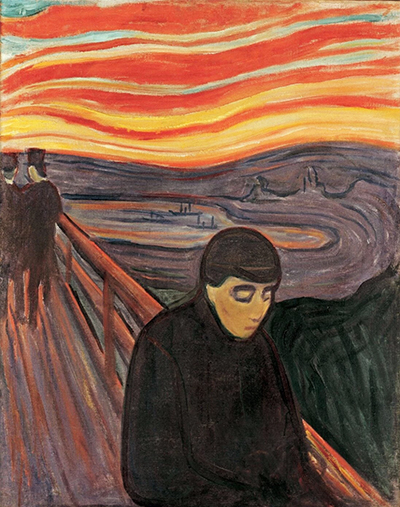
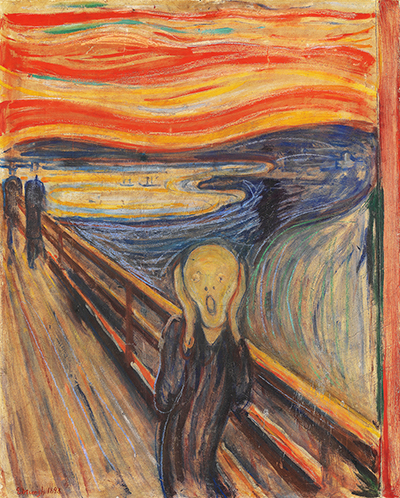
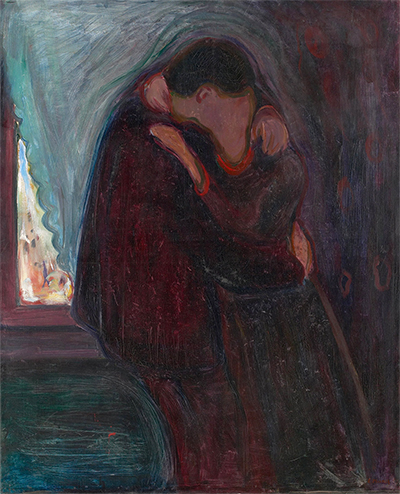
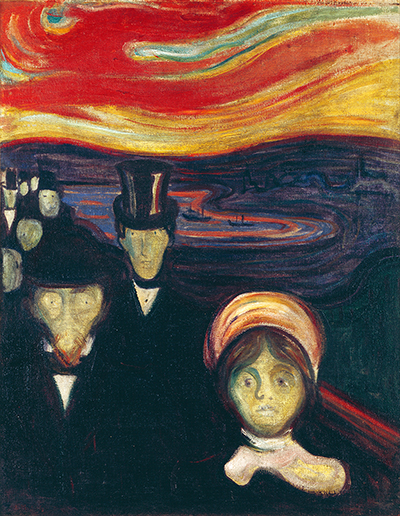
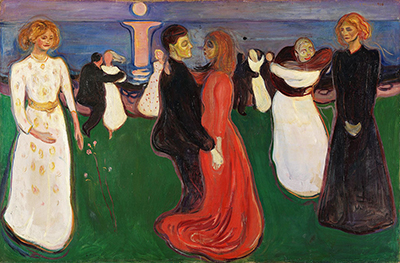
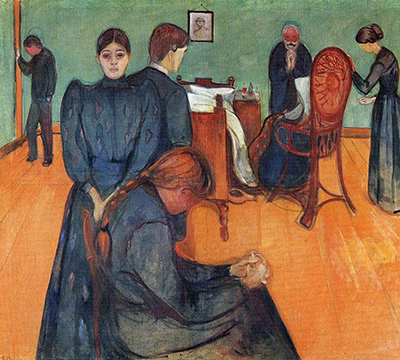
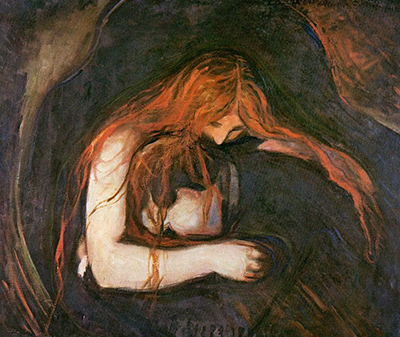
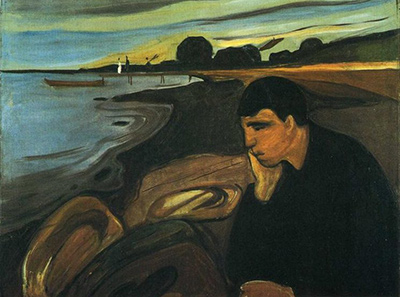
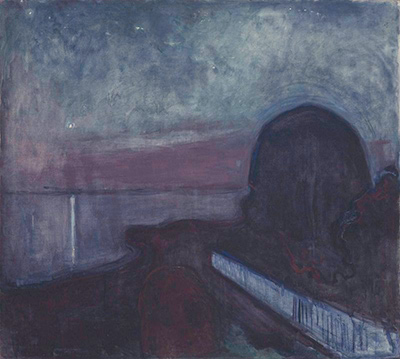
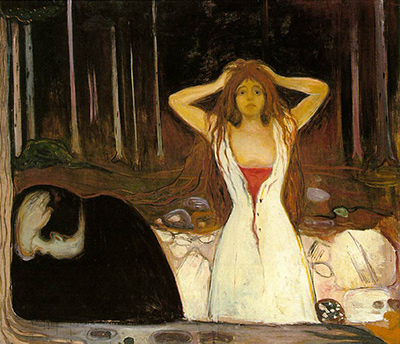
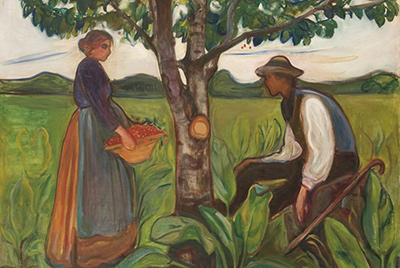
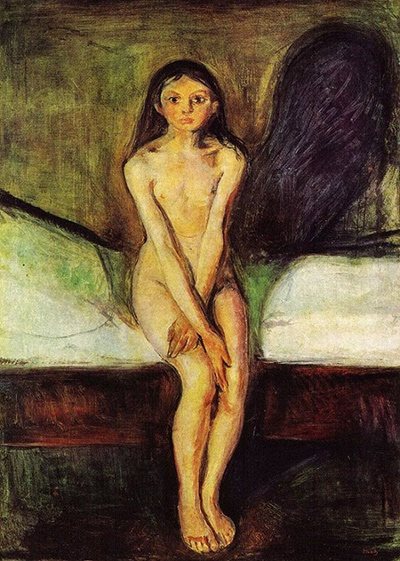
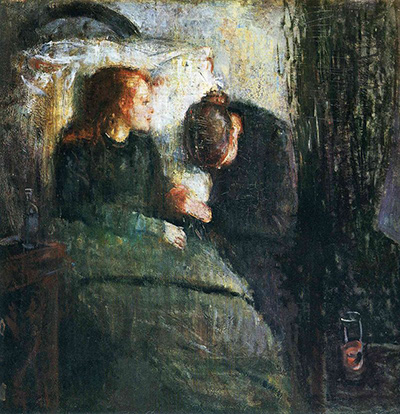
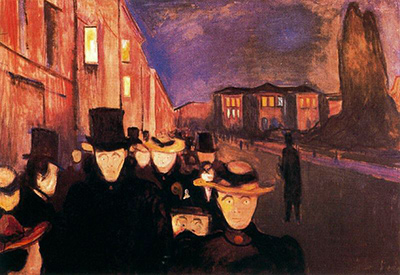
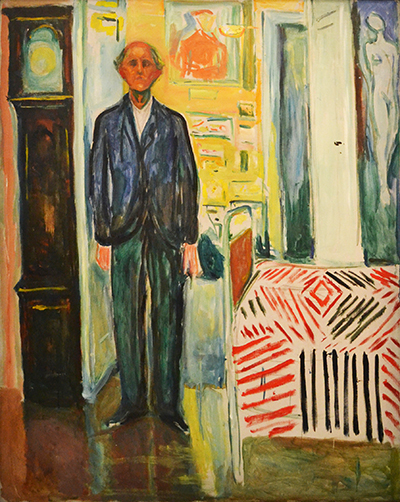
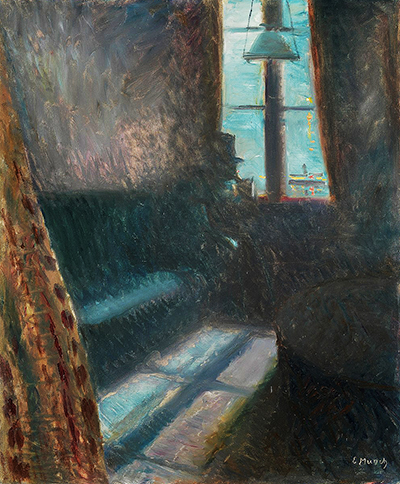
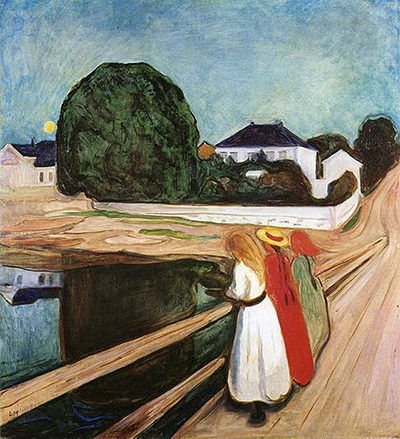
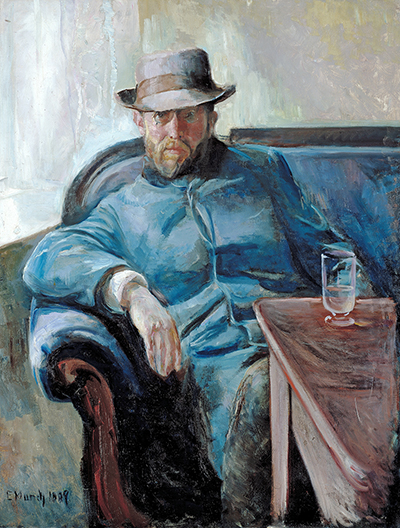
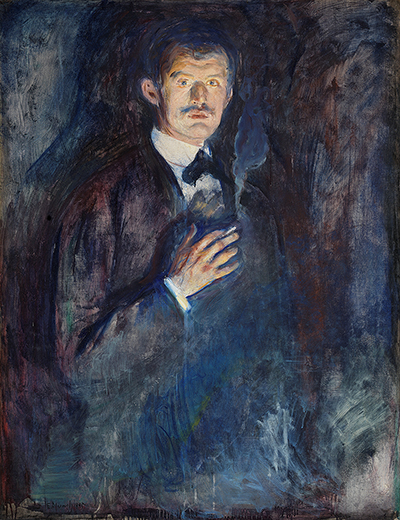
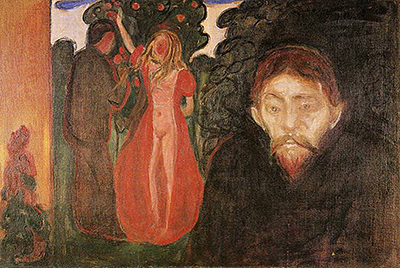
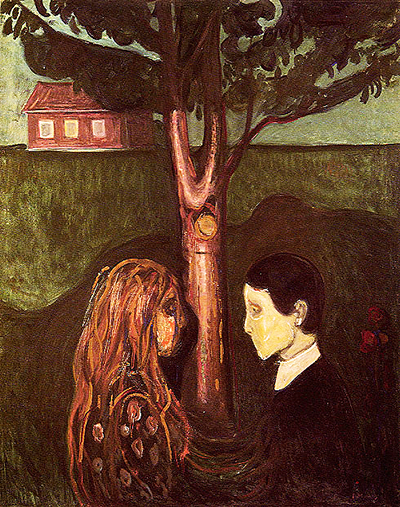
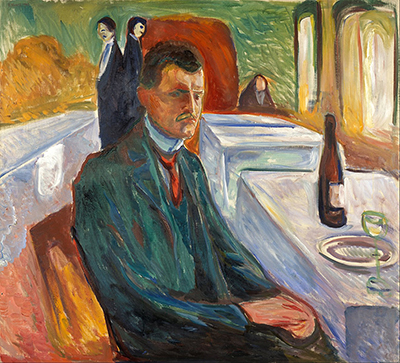
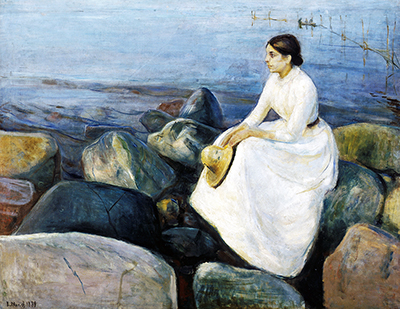
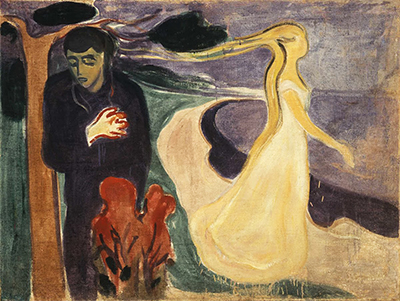
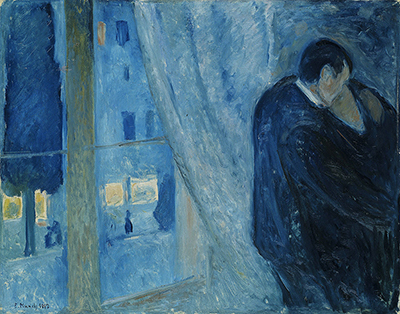
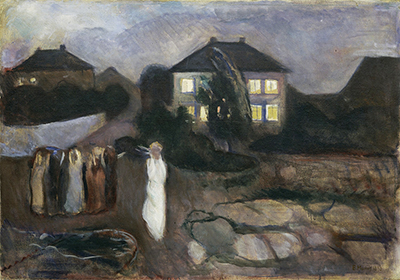
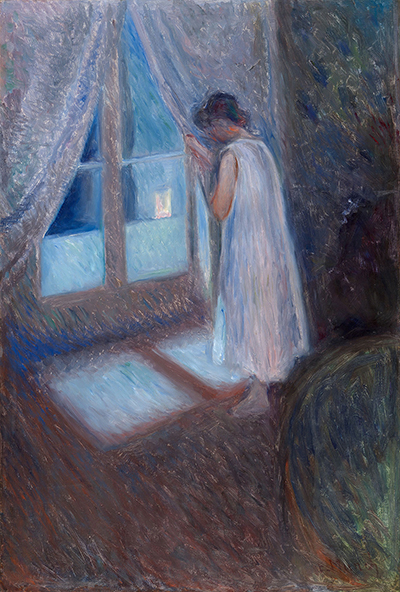
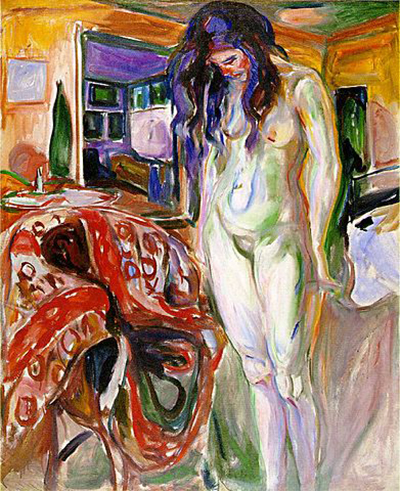
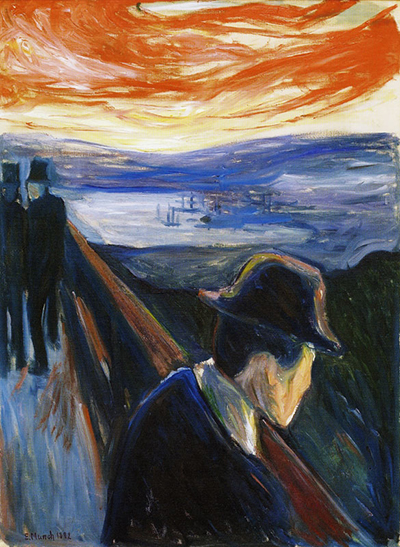
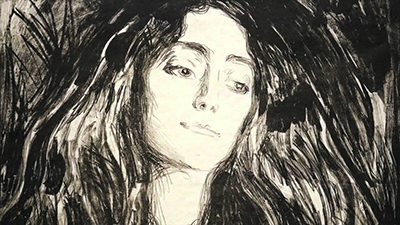
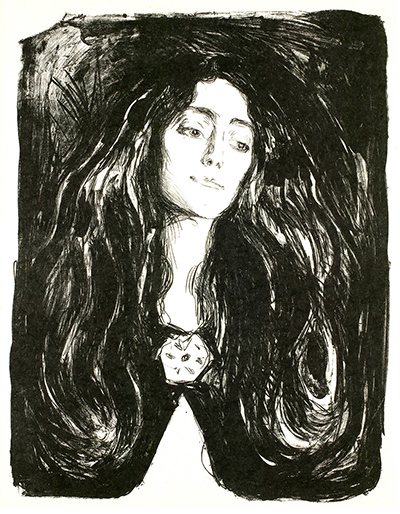
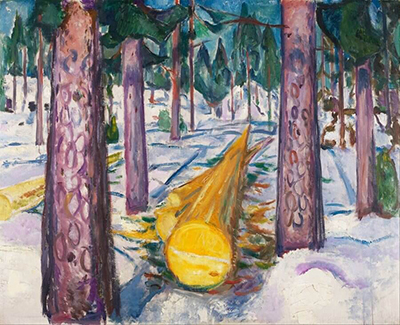
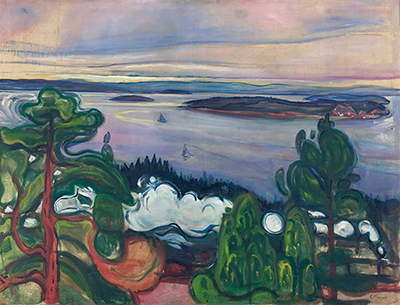
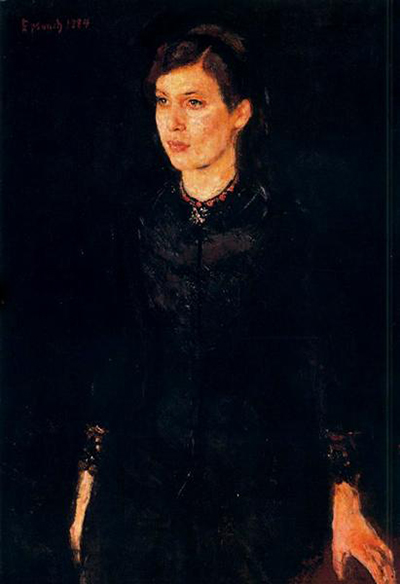
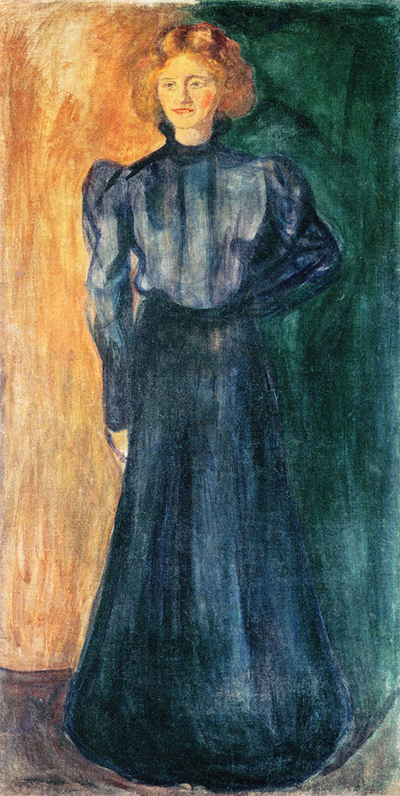
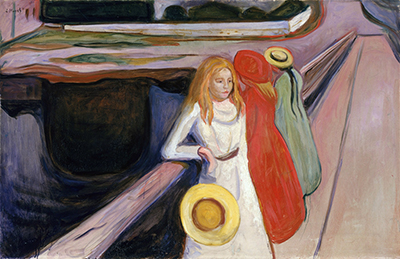
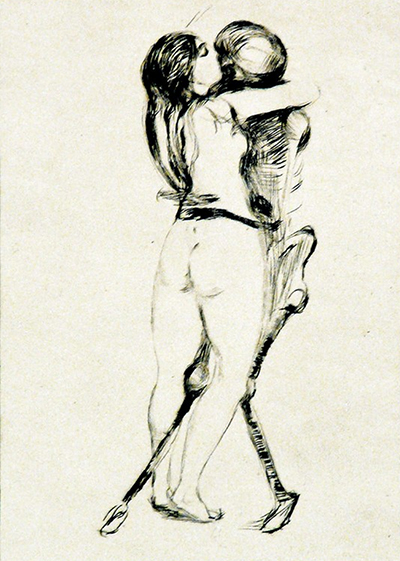
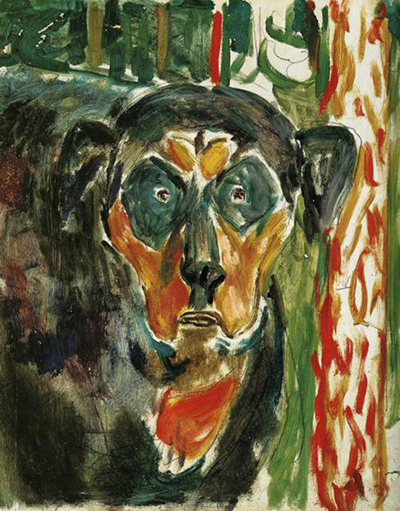
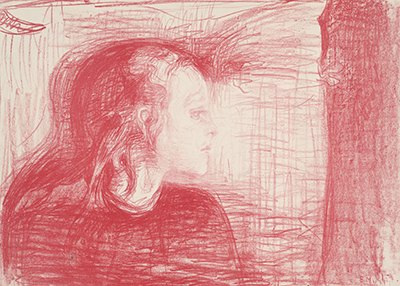
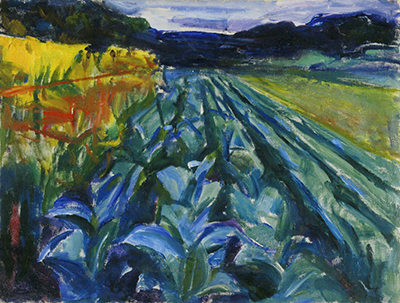
 Edvard Munch.jpg)
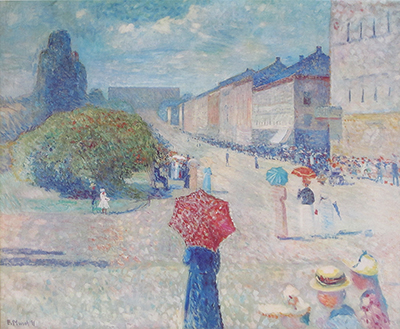
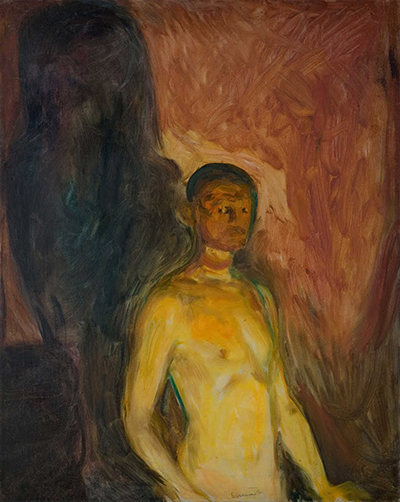
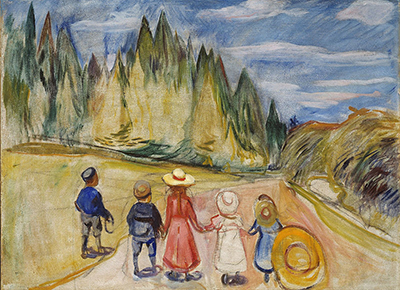
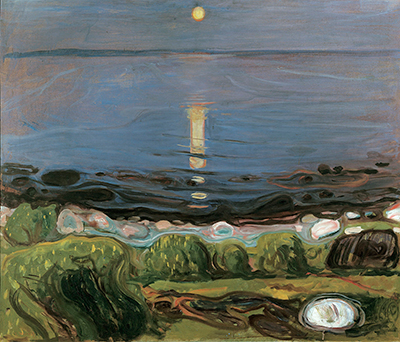
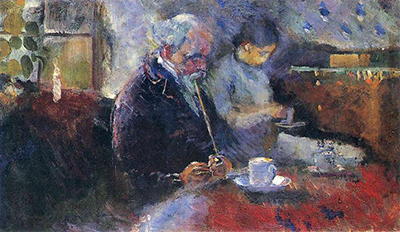
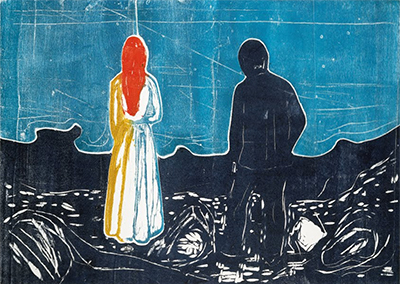
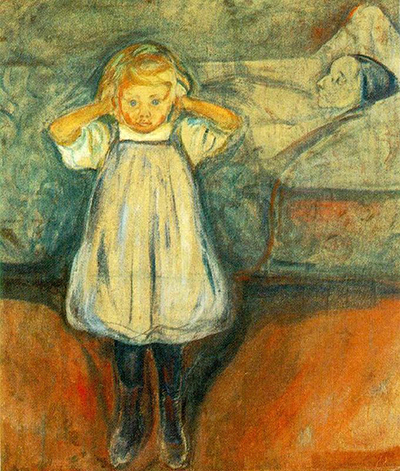
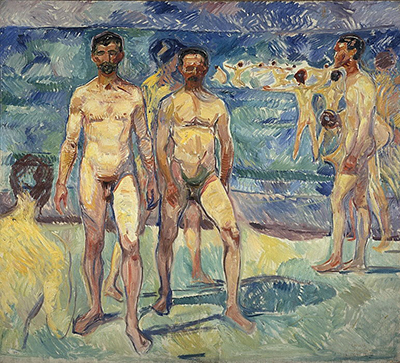
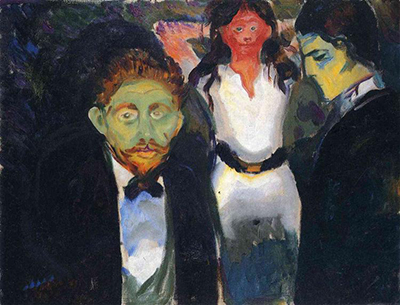
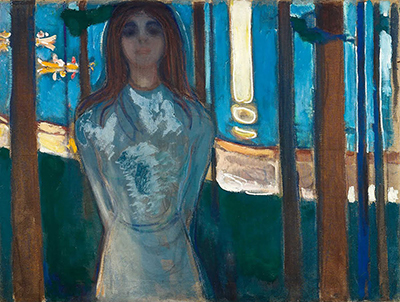
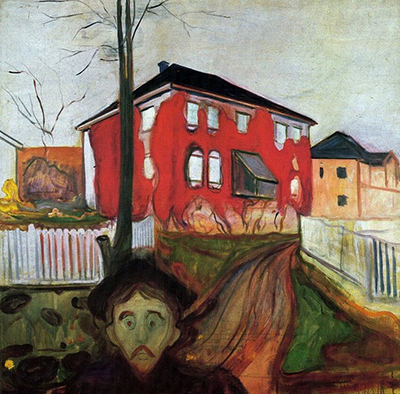
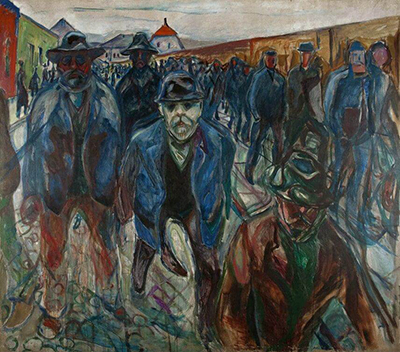
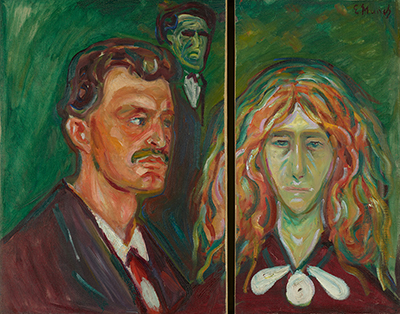
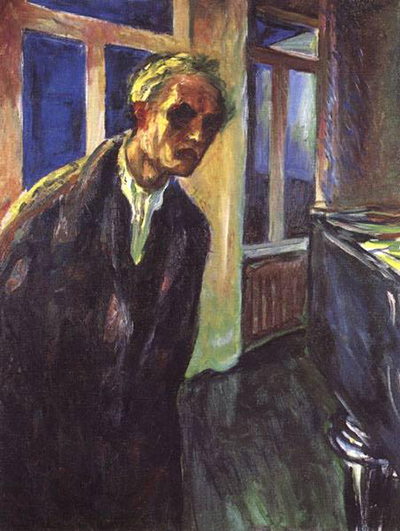
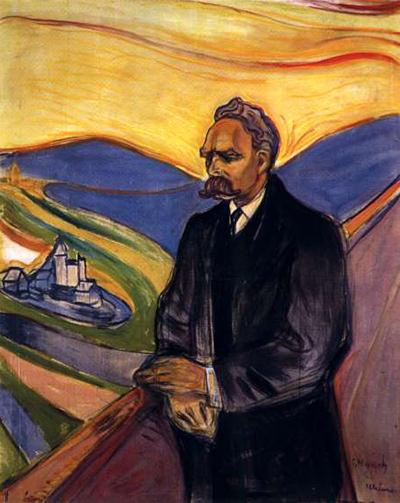
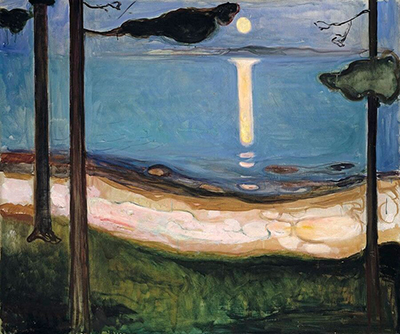
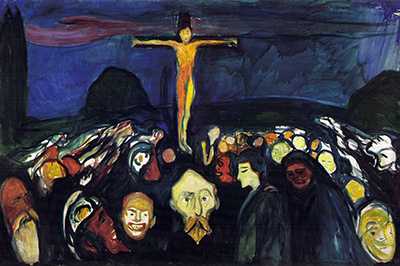
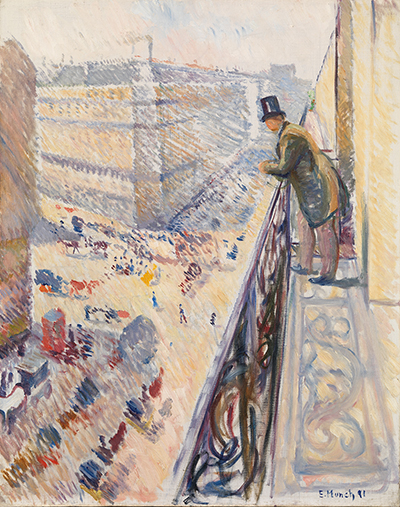
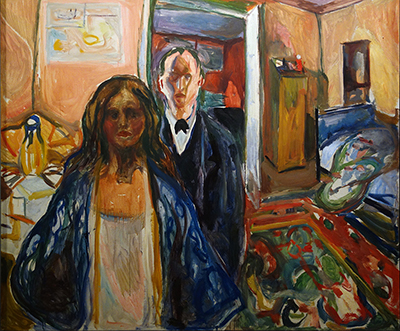
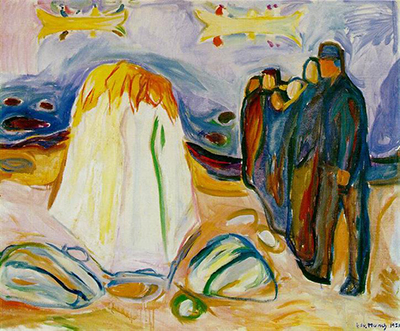
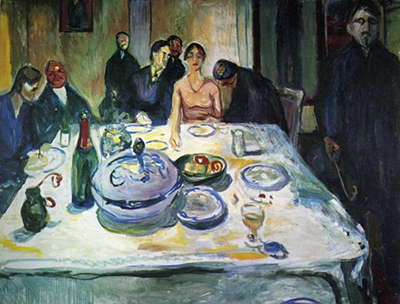
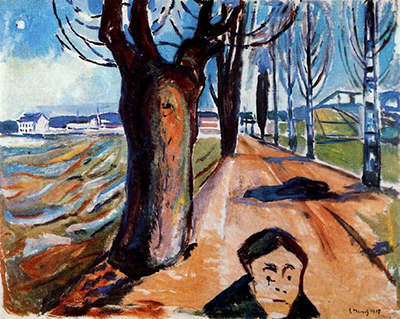
 Edvard Munch.jpg)
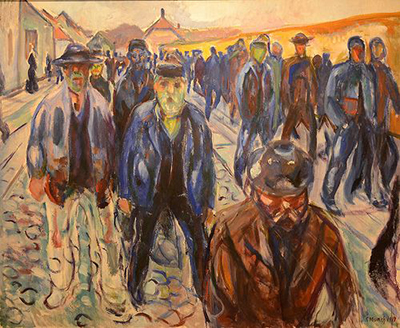
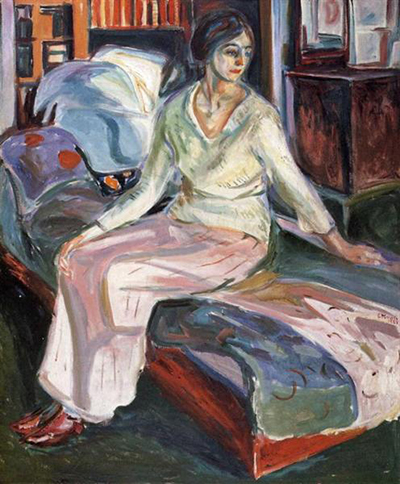
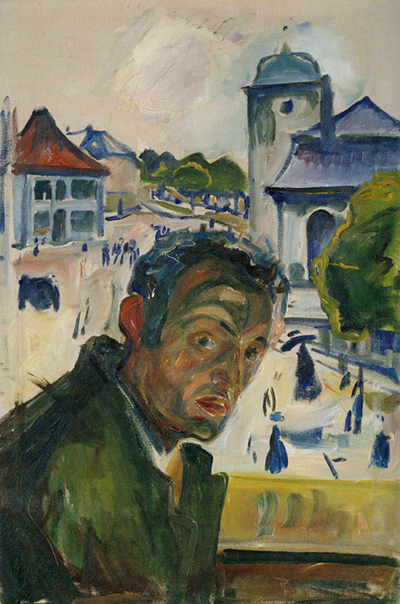
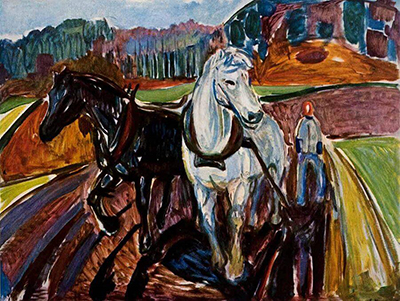
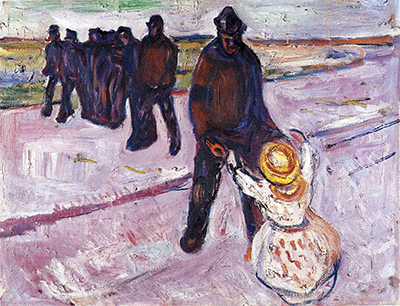
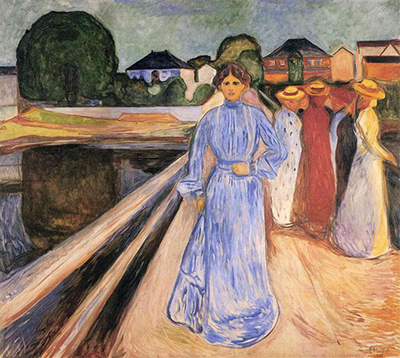
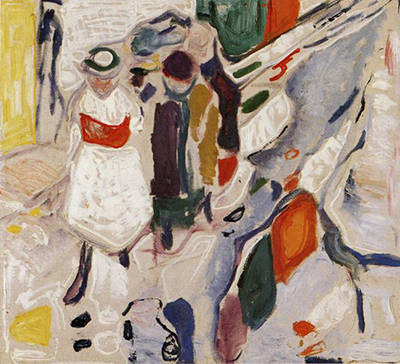
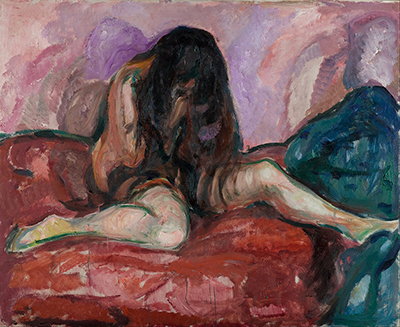
 Edvard Munch.jpg)
